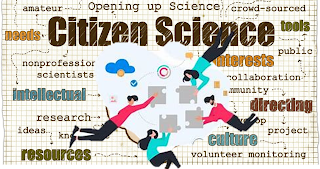The Collaborative Internet
A new article by Dr. Mallik Tatipamula (CTO, Ericsson) and Dr. Vinton Cerf (Google’s Chief Internet Evangelist and co-inventor of the Internet) maps the evolution of the web in “The 7 Phases of the Internet.” Their framework moves far beyond Web 4.0, outlining a connected future where human collaboration, artificial intelligence, and even quantum physics converge to form a single global ecosystem of shared intelligence.
Connectivity as Collaboration
The Internet began as a simple idea—linking research computers to share data. But, as Tatipamula and Cerf describe, each new phase has expanded not just connectivity, but collaboration itself.
-
Phase 1: The Internet connected computers and people across institutions.
-
Phase 2: The Mobile Internet made connectivity personal and portable, allowing billions to communicate, transact, and co-create on the go.
-
Phase 3: The Internet of Things (IoT) linked the physical world, turning homes, factories, and cities into participants in a shared, data-driven ecosystem.
Each stage built new forms of collective productivity—turning isolated systems into networks of cooperation.
Phase 4: The Internet of AI Agents — The New Workforce
We now enter Phase 4, where collaboration extends beyond humans. AI “agents”—both digital and physical—can perceive, reason, and act autonomously. These agents aren’t just tools; they’re participants in the economy, capable of collaborating with each other and with humans in real time.
Imagine networks of AI copilots writing code together, fleets of autonomous vehicles coordinating traffic flow, or industrial robots dynamically optimizing production across supply chains. This “Internet of AI Agents” transforms the Internet into a collaborative fabric of intelligence, where value creation happens through continuous cooperation between human and machine.
Future Phases: Expanding the Circle of Collaboration
The coming phases continue this expansion:
-
Phase 5: The Internet of Senses — Merging perception and communication to enable shared sensory experiences. Work, healthcare, and education will become immersive and co-experiential.
-
Phase 6: The Ubiquitous Internet — A truly global infrastructure uniting terrestrial, satellite, and aerial networks, ensuring equitable participation everywhere on Earth.
-
Phase 7: The Quantum Internet — A network that merges computation, sensing, and communication at the quantum level, enabling ultra-secure collaboration and distributed quantum computing.
Each new phase deepens the collaborative fabric—linking not just devices and data, but minds, senses, and intelligent systems.
From Shared Data to Shared Intelligence
In this seven-phase vision, the Internet evolves from a communication platform into a collaboration platform for intelligence itself.
Where Web 2.0 enabled social sharing and Web 3.0 empowered decentralized ownership, these new stages envision collective intelligence—AI agents, humans, and networks co-creating solutions to global problems in real time.
__________________________________________________________________________
The future of the Internet, as Cerf and Tatipamula describe it, isn’t about faster data—it’s about smarter cooperation. The lines between user, creator, and machine are dissolving. The Collaborative Economy is no longer just about sharing resources; it’s about sharing intelligence, perception, and purpose across an increasingly interconnected world.
In short:
The Internet’s next chapters will be written not just by people, but by the partnership between humans, AI, and networks—a collaboration at planetary scale.
REFERENCE
History of Internet: IoT's Expanding Role - IEEE Spectrum



Comments
Post a Comment